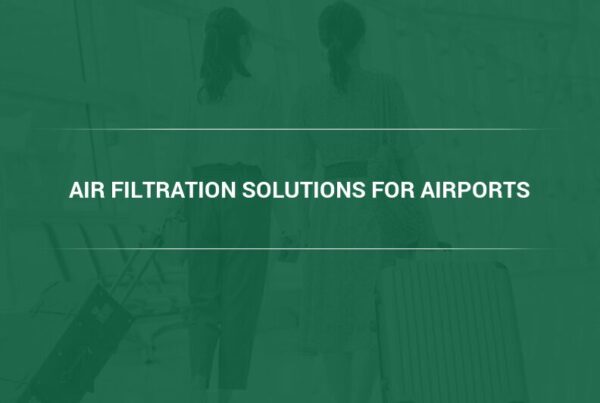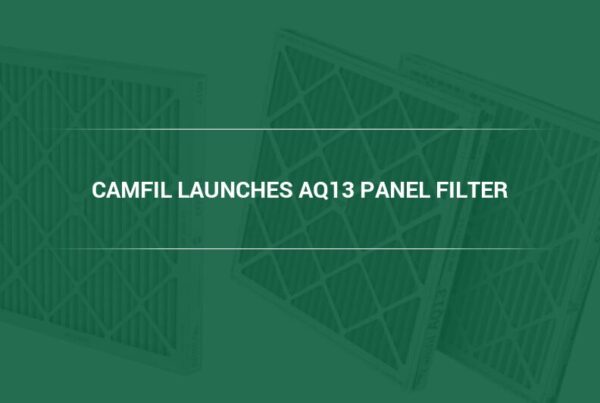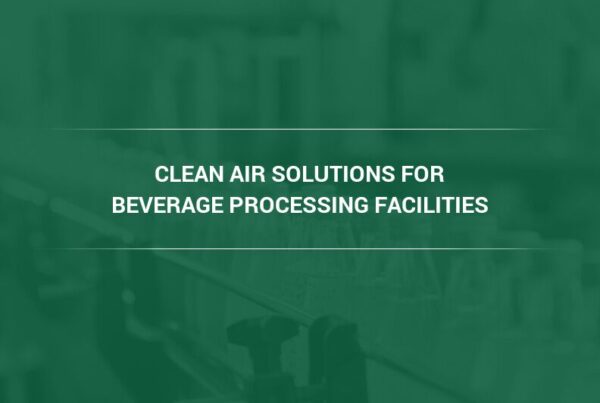Learn how investing in Camfil air filtration solutions lowers energy costs, protects equipment, boosts productivity, and supports sustainability, delivering true ROI from clean indoor air.
Most organizations approach air filtration decisions based on upfront costs rather than long-term value. But the benefits of clean air go beyond improved employee health and comfort; it’s also a smart financial strategy. Cleaner air reduces energy bills, extends the lifespan of critical equipment, improves employee productivity, and supports sustainability initiatives that are increasingly tied to financial success.
READ: The Key to Better Air Quality: Balancing In-House Expertise and Professional Maintenance Support
Camfil has developed advanced air filtration solutions that help organizations realize these benefits in measurable ways. By looking at air quality as an investment rather than an expense, businesses can uncover opportunities to strengthen both their operations and their bottom line.
Better Filters Reduce Energy Costs
Temperature control and ventilation account for at least 35% of total energy use in commercial buildings across the U.S., according to information from the U.S. Energy Information Administration. When air filters are poorly designed or not fully compatible with a building’s HVAC system, resistance to airflow can increase and HVAC systems are forced to consume more energy to push air through. This hidden cost can add up quickly over time.
Camfil’s low-pressure-drop filters are specifically engineered to balance high efficiency with minimal resistance. By allowing air to flow more easily while still capturing harmful particles, these filters reduce strain on HVAC systems and lower overall energy consumption. Facilities that upgrade to Camfil filters often report measurable reductions in utility bills, especially when filters are maintained properly and replaced on schedule.
In addition to energy savings, premium Camfil filters are designed for longer service life. Because they need to be changed less frequently, facilities save on labor costs, filter replacement expenses, and waste disposal fees. Fewer changeouts also mean less operational disruption, creating another layer of efficiency and value over time.
Products like the Camfil Hi-Flo ES pocket filter are designed with exceptionally low pressure drop, which helps HVAC systems operate more efficiently while lasting longer between changeouts.
Clean Air Keeps Equipment Running Smoother for Longer
Airborne pollutants don’t just affect people; they also impact machinery, laboratory equipment, and sensitive systems, including the HVAC system itself. When dust, smoke, or particulate matter accumulates on coils, circuit boards, or electronic components, efficiency declines and equipment begins to wear out faster. In manufacturing facilities, this can negatively affect the quality of the product being made. In data centers, for example, airborne contaminants can compromise cooling efficiency and contribute to costly downtime. In healthcare facilities, clogged or dirty systems can drive up maintenance costs and put critical equipment at risk.
READ MORE: Why Your Million-Dollar Database Is Choking to Death (The Air Filtration Crisis No One Talks About)
Upgraded filters provide a line of defense that keeps contaminants from entering and damaging valuable infrastructure. By maintaining clean airflow, they help extend the lifespan of HVAC equipment, reduce the frequency of repairs, and limit the number of emergency service calls. These savings can be substantial for organizations operating complex facilities such as hospitals, laboratories, and manufacturing plants where unplanned downtime is especially disruptive.
Workforce Productivity and Health: The Hidden Bottom-Line Impact
Clean indoor air also translates to workforce performance. Numerous studies have shown that exposure to pollutants such as PM2.5, volatile organic compounds, and allergens can impair cognitive function, increase absenteeism, and raise healthcare costs. Even modest improvements in air quality can yield noticeable gains in concentration, decision-making, and overall well-being.
Camfil’s filtration solutions help businesses reduce these risks by removing harmful particles and improving the quality of the air employees breathe every day. Healthier air leads to fewer sick days, lower turnover, and better morale. For schools and universities, it supports higher attendance and better learning outcomes. For offices, it fosters sharper thinking and stronger productivity. When viewed across an entire workforce, these improvements generate financial returns that far exceed the cost of the filters themselves.
Compliance with Air Quality Regulations Helps Avoid Fines and Liability
In certain industries, clean air is mandated by compliance with safety standards. Pharmaceutical manufacturers, healthcare providers, and food and beverage facilities, for example, all may operate under regulations that dictate acceptable air quality levels. Falling short can result in fines, halted production, or even product recalls that carry reputational and financial consequences.
By choosing better air filters, companies can meet and exceed these standards, helping organizations maintain compliance while protecting their operations. By proactively investing in reliable filtration, facilities reduce the risk of costly regulatory issues and demonstrate a commitment to quality and safety. This not only saves money but also builds trust with customers, regulators, and stakeholders.
High-Efficiency Air Filters Help Align Cost Savings with Sustainability Goals
Sustainability is no longer optional for many organizations. Customers, investors, and even employees expect companies to prioritize environmental responsibility. At the same time, businesses are under pressure to control costs and improve operational efficiency.
Camfil helps facilities achieve both goals. Filters designed for longer service life mean fewer replacements and less waste going to landfills. Energy-efficient designs lower carbon emissions while simultaneously reducing utility costs. These benefits make it easier for companies to report progress toward environmental, social, and governance goals while also freeing up budget for other priorities. In this way, sustainability initiatives do not simply reflect good environmental stewardship; they also reinforce financial performance.
Real-World ROI: Why Clean Air is a Smart Investment
Consider the combined effect of these factors: lower energy bills, fewer equipment failures, healthier employees, and reduced compliance risks. Each benefit adds up, and together they create a compelling return on investment. For example, a hospital that upgrades to Camfil air filters might save thousands annually in energy costs, avoid costly HVAC repairs, reduce staff sick days, and maintain compliance with critical standards. The value of clean air, once considered intangible, becomes a measurable contributor to financial success.
About Camfil
The Camfil Group is headquartered in Stockholm, Sweden, and has 29 manufacturing sites, six R&D centers, local sales offices in 35+ countries, and 5,700 employees and growing. We proudly serve and support customers in a wide variety of industries and communities across the world. To discover how Camfil USA can help you protect people, processes, and the environment, visit us at www.camfil.us.
Media Contact:
Lynne Laake
Camfil USA Air Filters
Phone: 888-599-6620
Email: Lynne.Laake@camfil.com
Sources:



